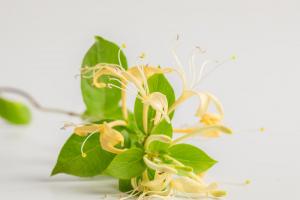Should Walnut Trees and Apple Trees be Planted Close By?
Planting trees is one of the best ways to contribute to the environment. Trees provide a range of benefits, from improving air quality to preventing erosion. However, when selecting trees for planting, it is essential to consider the interactions between different species. This is particularly important when it comes to fruit and nut trees, as planting them together requires careful consideration. This article will explore whether walnut and apple trees should be planted close by.
Benefits of Walnut Trees
Walnut trees are known for their nutritional benefits as an excellent source of vitamins, minerals, and antioxidants. They also provide wood that is valuable for furniture making and building. The deep roots of walnut trees stabilize soil and prevent erosion, making them ideal for use in agricultural areas. In addition, walnut trees produce chemicals that can inhibit the growth of other plants, a phenomenon known as allelopathy.
Benefits of Apple Trees
Apple trees are a common garden fruit tree that produces delicious, healthy apples. Apple trees also provide aesthetic benefits with delicate blossoms during the spring and attractive foliage throughout the year. Apple trees also play a crucial role in the ecosystem by providing food for bees and other pollinators. Apples are a rich source of fiber and vitamins, which can help reduce the risk of cardiovascular disease, cancer, and diabetes.
Why Shouldn't Walnut Trees and Apple Trees be Planted Close By?
Despite the benefits of both walnut and apple trees, planting them close by is not always a good idea. One of the reasons is allelopathy. As mentioned earlier, walnut trees contain a chemical called juglone that is toxic to many plants, including apples. Juglone is produced by the roots, leaves, and bark of the walnut tree, and it can remain in the soil for years.
Another reason to avoid planting apple trees near walnut trees is disease. Walnuts are susceptible to a range of diseases, including crown rot and root rot. These diseases can be transmitted to the apple trees through the soil, and once infected, apples can suffer significant damage or die.
Are There any Exceptions?
Although it is generally not recommended to plant walnut and apple trees together, there are a few exceptions. Some cultivars of apple trees are more tolerant of juglone than others. Crabapple trees, in particular, are more capable of withstanding the effects of juglone. However, it is essential to check with local nurseries or agricultural extension offices for advice on which cultivars are most appropriate for your location.
Another option is to use barriers, such as landscape fabric or plastic, to prevent the chemical leakage of juglone into the soil. The barrier should be installed at least 3 feet deep and 3 feet wide around the tree. This method is not a foolproof solution, but it can help reduce the impact of allelopathy.
Conclusion
It is ultimately up to personal preference whether walnut and apple trees should be planted close by. However, it is essential to weigh the benefits and risks before making a decision. If you decide to plant both types of trees in close proximity, it's important to consider the cultivars of each type, the soil quality, and the potential for disease. By taking these factors into consideration and making informed choices, you can ensure that your garden is healthy, beautiful, and productive.

 how many times do yo...
how many times do yo... how many planted tre...
how many planted tre... how many pine trees ...
how many pine trees ... how many pecan trees...
how many pecan trees... how many plants comp...
how many plants comp... how many plants can ...
how many plants can ... how many plants and ...
how many plants and ... how many pepper plan...
how many pepper plan...

































